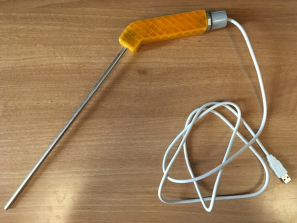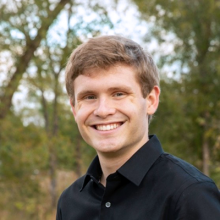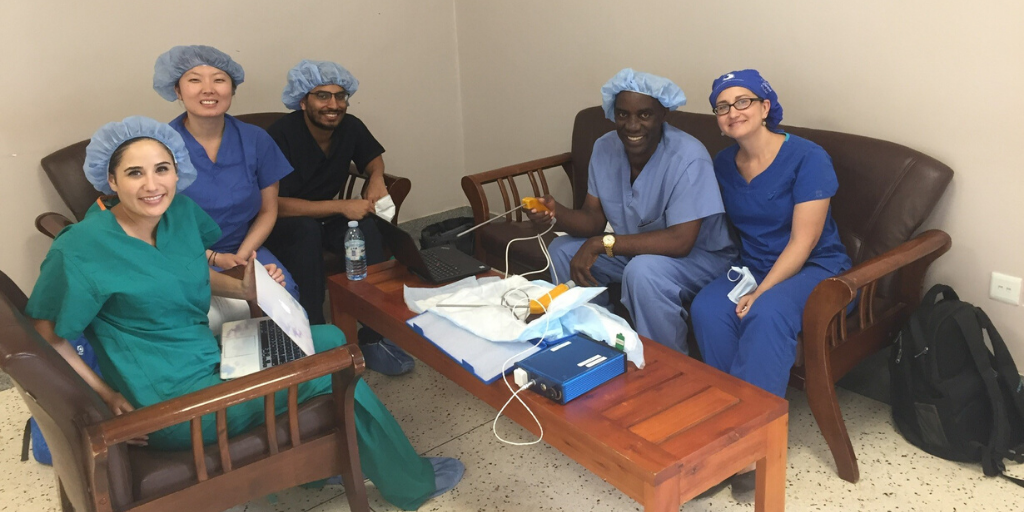Cut Costs, Not Patients: The Promise of Laparoscopic Surgery in Global Health
November 15, 2021
By Milena Ozernova ’22
You walk down the brightly lit hospital corridors of Duke University Hospital, bracing yourself for abdominal surgery. You’ve been told the procedure is minimally invasive and your risk of complications is low — your doctor mentioned performing a “laparoscopy.”
At the same moment, on the other side of the world, a patient is lying in an operating room, undergoing the same procedure in a hospital that cannot afford a laparoscope. Their recovery time will take twice as long and incur the risk of life-threatening complications.

Laparoscopy is a surgical procedure that can be carried out inside the patient’s abdomen without having to make large incisions in the skin. It’s made possible by an instrument called a laparoscope, a small tube that has a light source and a camera, which relays images of the inside of the abdomen to a television monitor. Unfortunately, such minimally invasive surgery comes at a huge price: laparoscopic tools cost thousands of dollars and require expensive maintenance.
To increase access to laparoscopic surgery in low-income countries, a multiyear Bass Connections project team has been developing a low-cost and reusable laparoscope.
The team has built a comprehensive set of prototypes, including the KeyView Laparoscope, which only costs $150 and can be connected to a laptop for power; the KeyLoop Retractor, which gently lifts the abdominal wall; and the KeyMentoring program, which allows surgeons in different locations to interact during surgery and enables information exchange and remote mentoring.

I recently sat down with John Boom ’22, a Duke undergraduate double-majoring in biomedical engineering and chemistry, to discuss his experience solving engineering challenges in his Bass Connections project. But first, I wanted to know what drew John to Bass Connections in the first place.
“During my freshman year, I was taking Engineering 101 and by random luck, I was assigned to a global health project looking to address the gap in women’s healthcare globally,” John said. “I found that project really interesting, so going into my sophomore year, I started looking for another global health project with a focus on increasing access to the technologies that are accessible in the high-income countries, but aren’t generally available in a lot of regions in Sub-Saharan Africa.”
John found his opportunity with the laparoscopic surgery team. The project lead assigned him to the design subteam, tasked with improving the hardware performance of the ReadyView Laparoscope. “As a part of the design team, I was in charge of helping integrate the camera into the tip of the device,” John said. “There are a lot of engineering challenges associated with the process, so my work has revolved around trying to solve those issues.”
A clinical trial subteam collects feedback on the device from surgeons in different countries, a software subteam streamlines the laparoscope’s functions and a business subteam studies the regulatory market in Sub-Saharan Africa. “It’s a unique project because it’s run like an actual business,” John explained.

With such a comprehensive structure, the project team has been able to get an overall picture of how laparoscopic tools are used in different regions of the world, including what different needs they serve and how the laparoscope’s design can effectively address them.
The interdisciplinary design of the team also ensured that all the students could collaborate with other subteams and contribute to the process of developing and implementing the laparoscope depending on their specific task.
“Something I have really enjoyed about this project is that it felt like working at a company with lots of small projects going on simultaneously,” John explained. “I get to watch weekly presentations from the clinical trial subteam and weekly presentations from the economics students who are running the business subteam, so I get a different perspective on how everything is implemented, which has been really wonderful.”

An interesting part of John’s responsibilities as a project team member was to explain the engineering challenges to people without any technical background. As it often happens with the design process, one fix can create ten other major problems, so getting the prototype up and running has been a complicated and time-consuming task – and one that has taken patience and creativity to communicate.
“This prototype was supposed to be done six months ago, what do you mean that we’re barely one step forward?” John laughed. “There’s been weekly tests, everything has been getting better, but it’s hard to communicate that [to others] when you’re working with a really tough problem.”
In other team-based design projects John has done, the focus was limited to the technical side of the issue. But in his Bass Connections team, students had the opportunity to get the integrative feedback about the laparoscope and its implementation, which helped John understand the larger scale of the process, such as how you actually deploy a new innovation and what that innovation means for the stakeholders.
John particularly enjoyed working alongside his project leader, Tamara Fitzgerald, and realizing the role she played in bringing all the different perspectives together to create a strong team. “This experience made me realize that [Dr. Fitzgerald’s role] is something I really want to have,” John said. “I don’t just want to be a bench engineer — I want to work in an interdisciplinary team and lead projects like this one.”

While John acknowledged that the project included both technical and personal challenges, the process of working with his team to solve the engineering flaws in the laparoscope has been incredibly fulfilling. “In an engineering project like this, you spend 99 percent of your time failing,” John sighed, “but it’s rewarding when you experience problem after problem and then reach another major milestone. It’s a fantastic feeling to say ‘Aha, this kind of works! I fixed this problem and it won’t appear again’.”
Duke University senior Milena Ozernova is a Bass Connections communications assistant majoring in Political Science. Milena loves to travel around the world, write articles on the issues that matter to her and the student community, and take photographs of street cats.
Learn More
- Read more about this project team and its work throughout the years, and see what this year’s team is doing.
- Browse the Bass Connections 2020-2021 Annual Report.
- Check out stories from students about their Bass Connections experiences.
